
A variety of ecoregions around Colorado means wasp and bee diversity. Formal checklists might reveal over one thousand wasp species in the state. Like most states, the list would be heavy on the parasitic wasps such as Ichneumon and the vegetarian sawflies, whose larvae munch on both forest and residential leaves of trees and shrubs. The picture at the top of the page shows a member of the Dolichomitus genus, known for the long, thin bodies and long ovipositors.
In any one area, the average person can easily find over fifty wasp and bee species by paying attention to garden visitors as well as the wasp and bee populations at local parks. Goldenrod and the white flowers of Queen Anne’s Lace are often wasp and bee magnets.
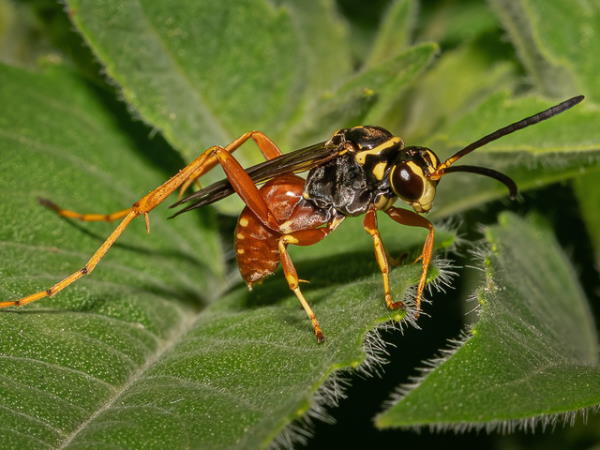
Ceropales

Western Spider Wasp
Colorado Wasps: Vespids
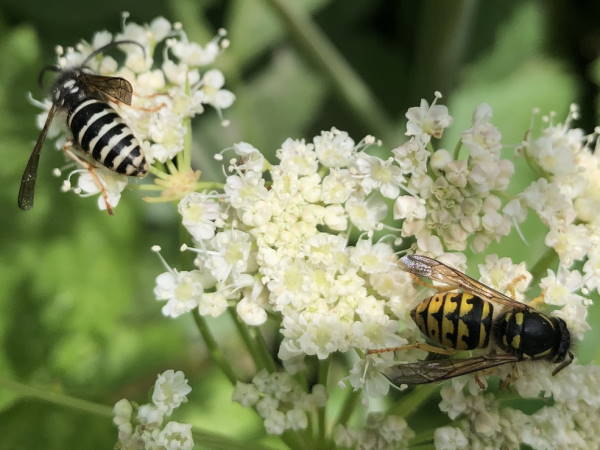
Because of the concerns for health and safety, the stinging wasps of the Vespidae family, commonly called Vespids lead the discussion. Basically, Colorado hosts a handful of the stinging wasps in the paper wasps and yellowjackets.
Two yellowjacket species in the picture provide a comparative look for both size and color of the native yellowjacket species. The species with black and white bands on the abdomen looks to be the Parasitic Yellowjacket that takes over aerial yellowjacket nests. It’s one of a few yellow jackets with black and white bodies with the most common being the Bald-faced hornet.
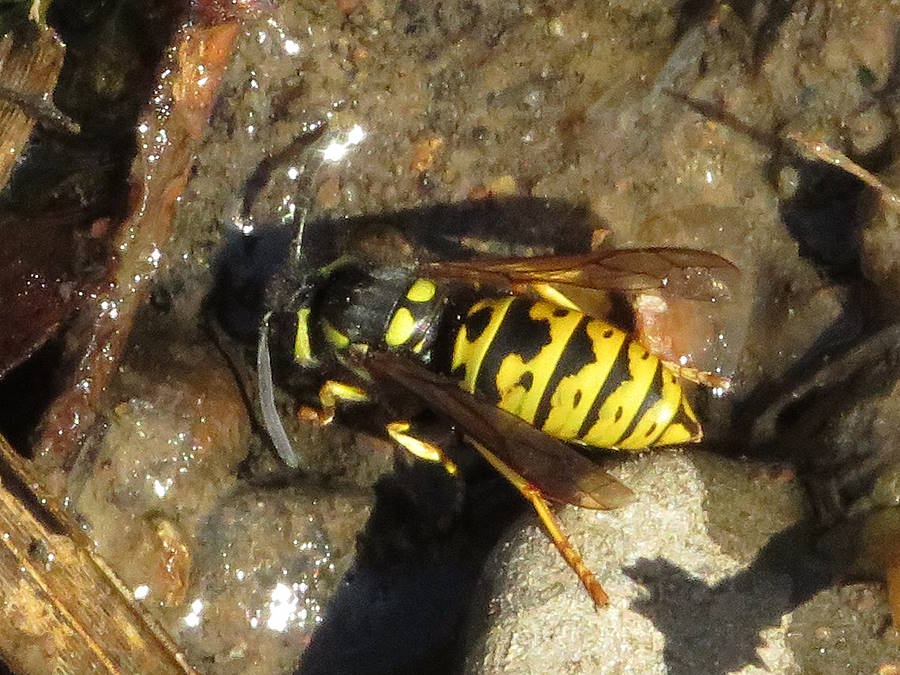
Prairie Yellowjacket
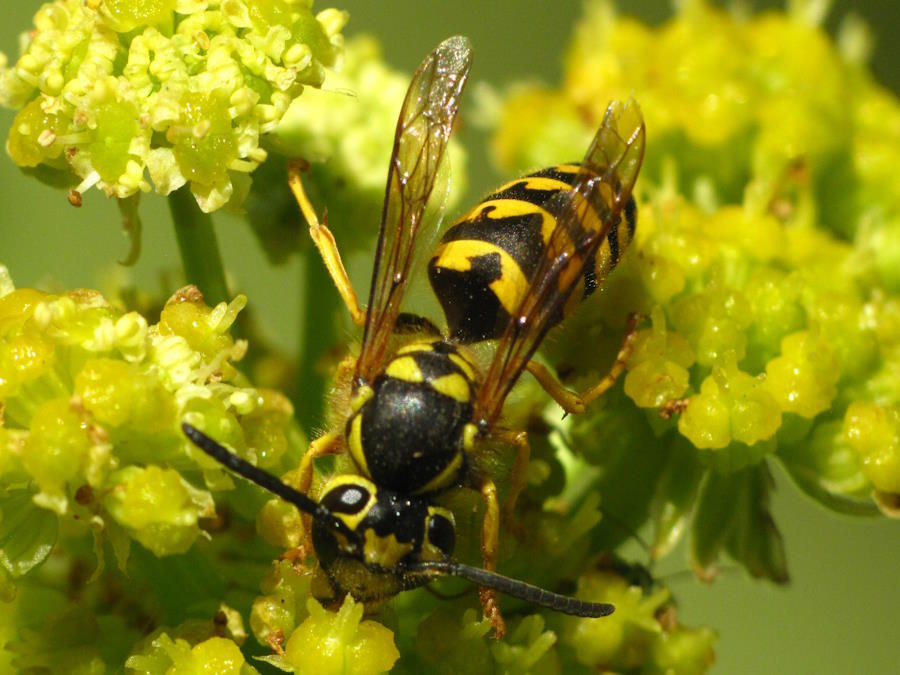
Western Yellowjacket
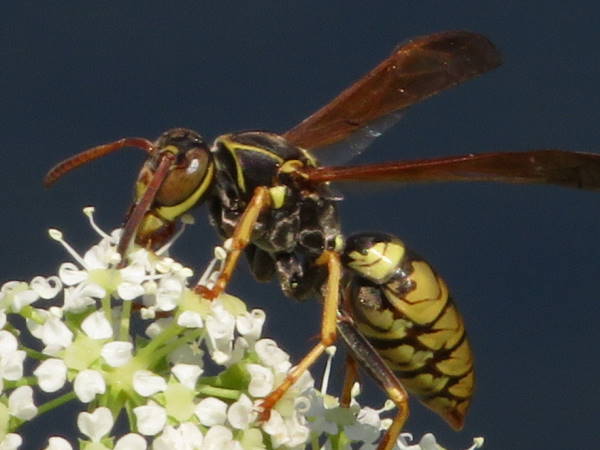
Golden Paper Wasp
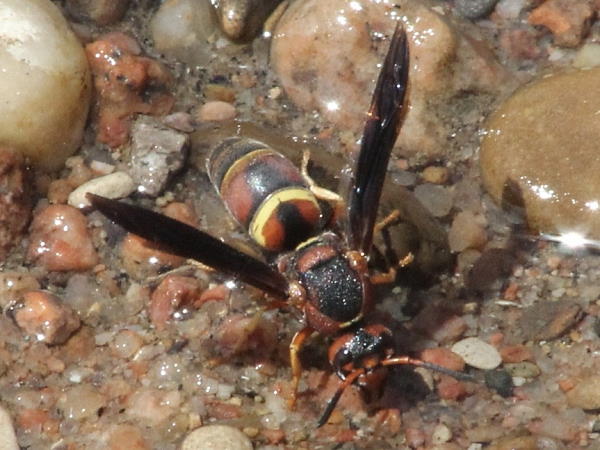
Potter and mason wasps are the medium sized vespids that frequent garden flowers. They come in a large variety of yellow and black, black and white, and some red body patterns.
Contrary to the eusociality of the yellowjackets and paper wasps, they are solitary wasps that build single nests. Species in the genus Euodynerus genus commonly have yellow bodies, although as the picture shows, some have red body patterns.
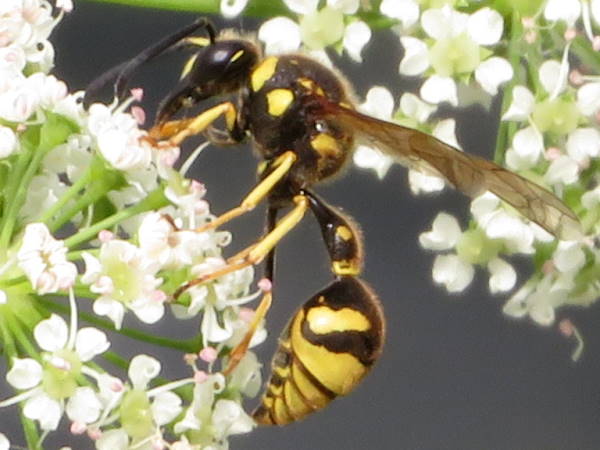
he Cross Potter wasp
Thread-waisted Wasps
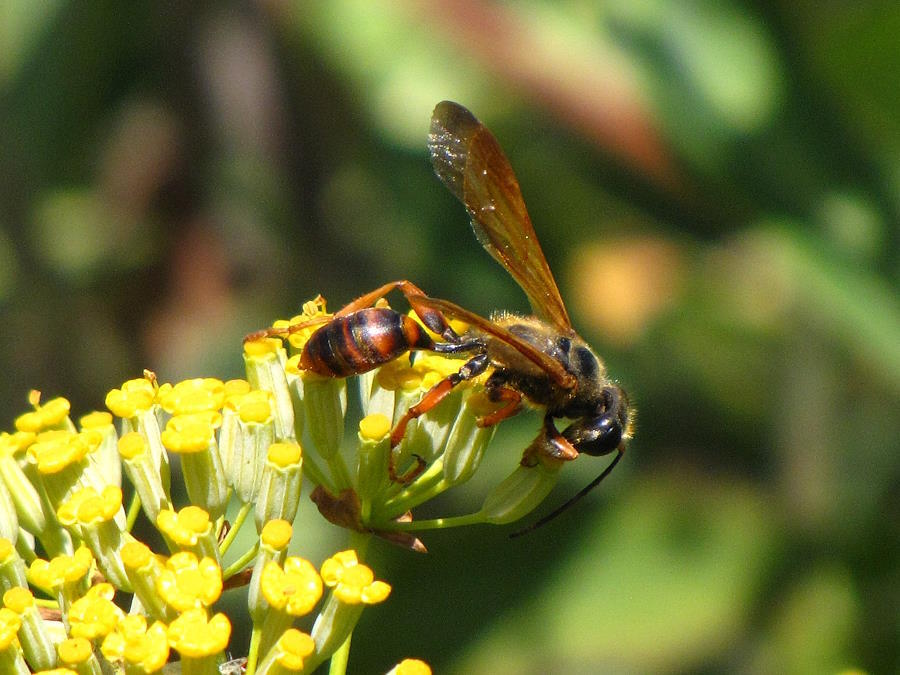
The large size of thread-waisted wasps makes them easily noticed around the home and garden. Solitary Wasps, they often get their nicknames based on their nesting habits. The picture shows an Elegant Grass Carrying Wasp, one of a handful of native species.
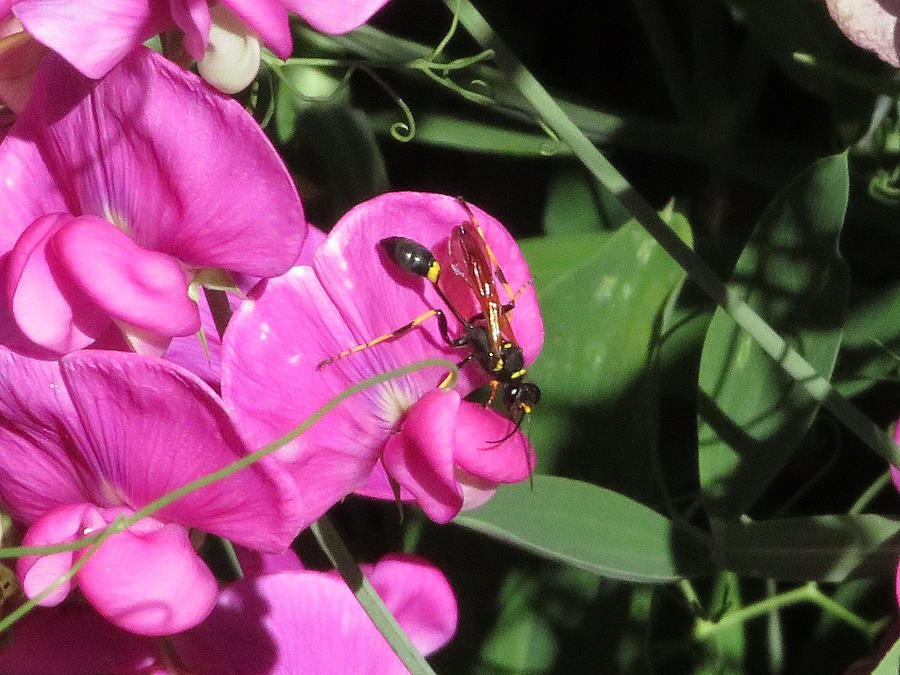
Yellow and Black Mud Dauber
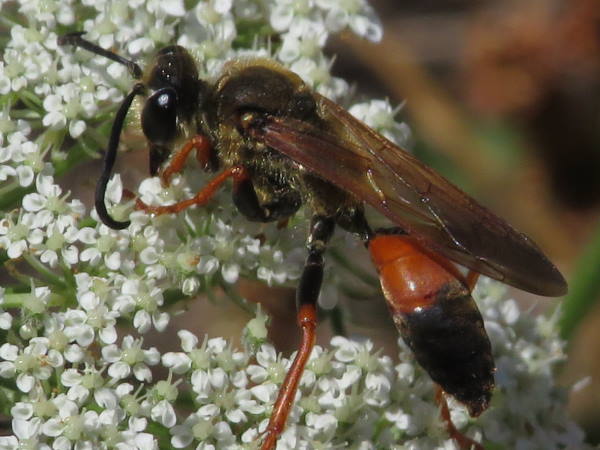
Great Golden Digger Wasp
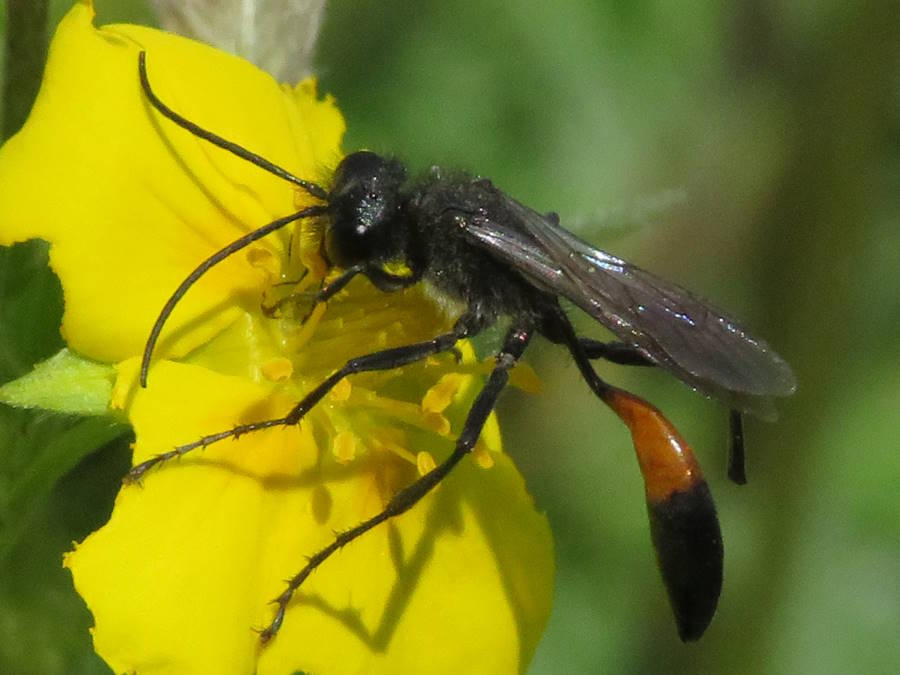
Cutworm Wasp
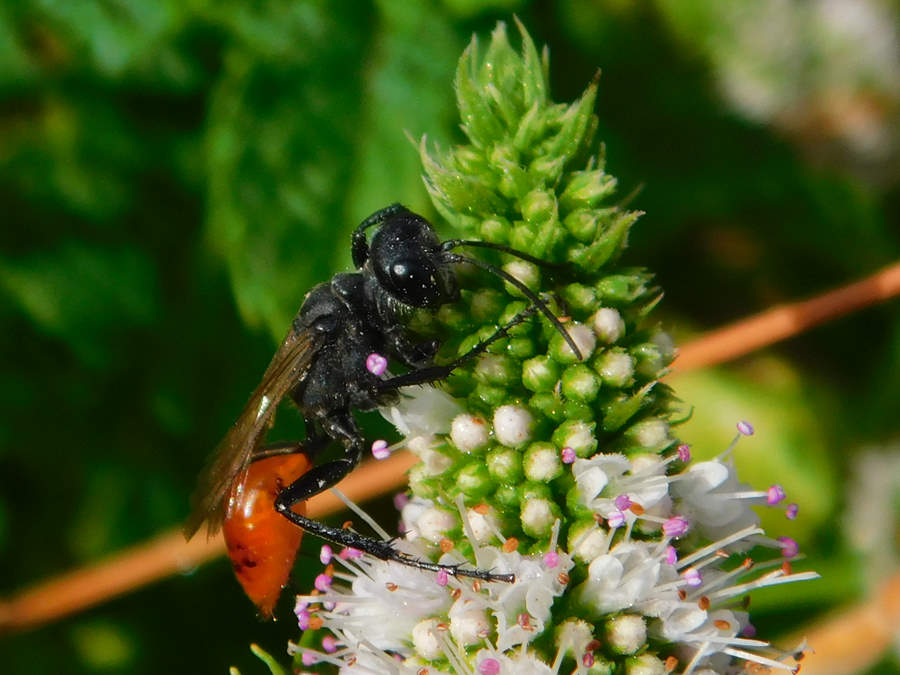
Prionyx
More Colorado Wasps
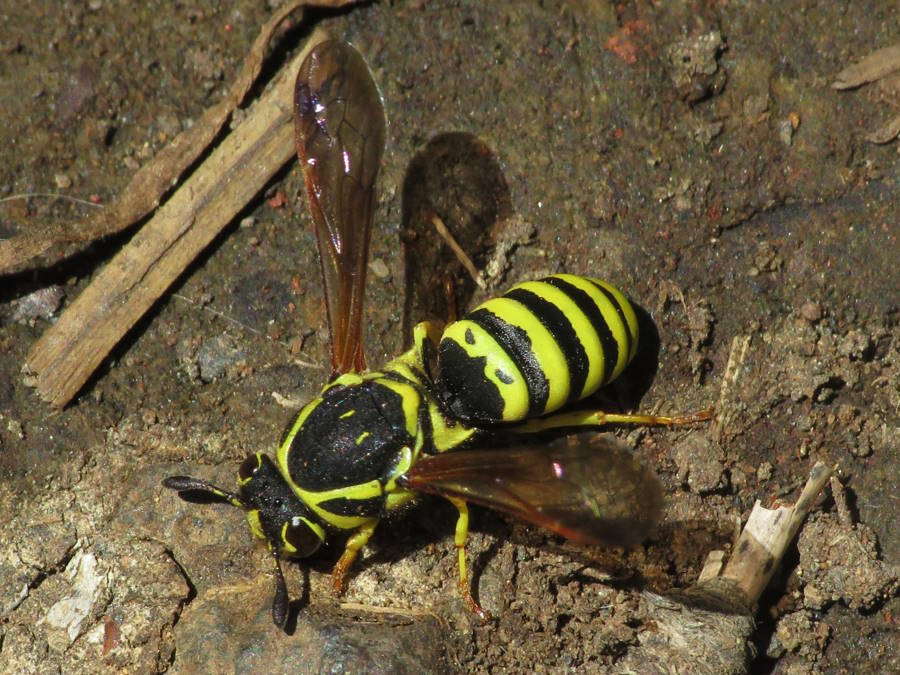
Edwards Pollen Wasp – vegetarian
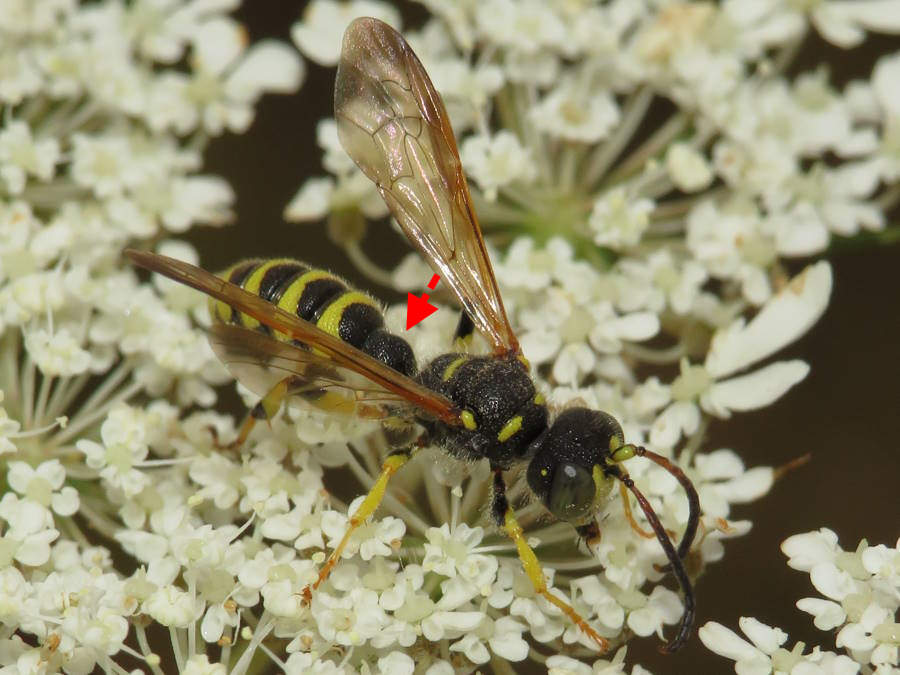
Weevil wasps are similarly sized. The red arrow points to the smaller top section of the abdomen, a good ID clue.
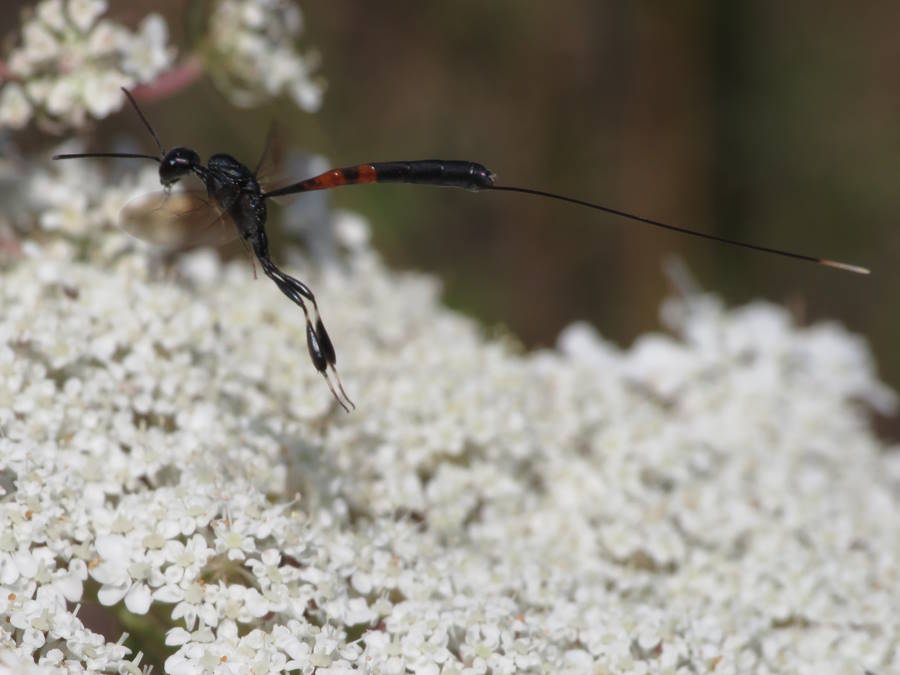
Carrot Wasp
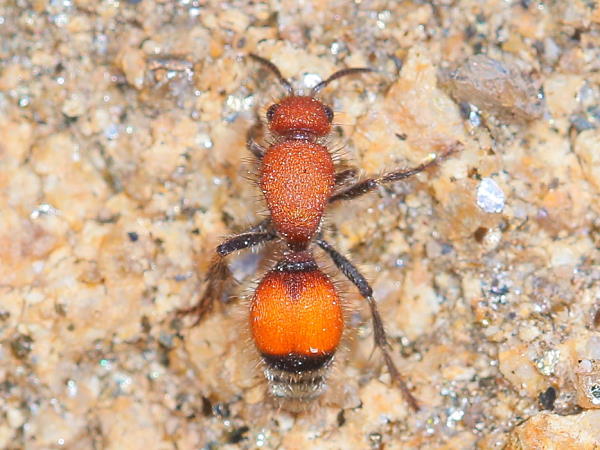
Despite differing appearances Velvet ants get placed in the same superfamily as spider wasps. Females are wingless, and as the picture shows, their body resembles an ant. Like spider wasps, hundreds of species have been documented in the United States, most in the sandy soils of the Southwest. Therefore, the southern half of the state would be the prime area for finding many species.
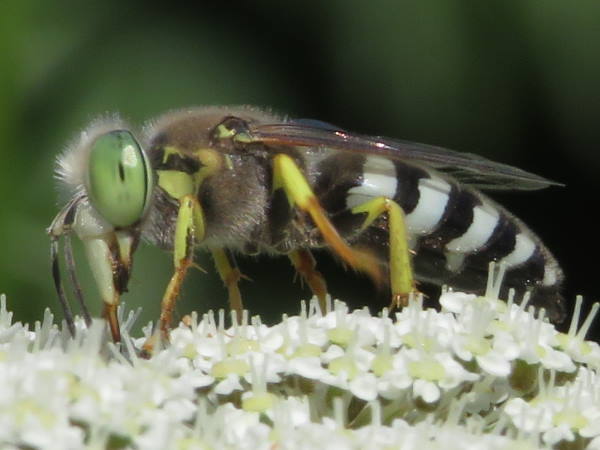
American Sand Wasp
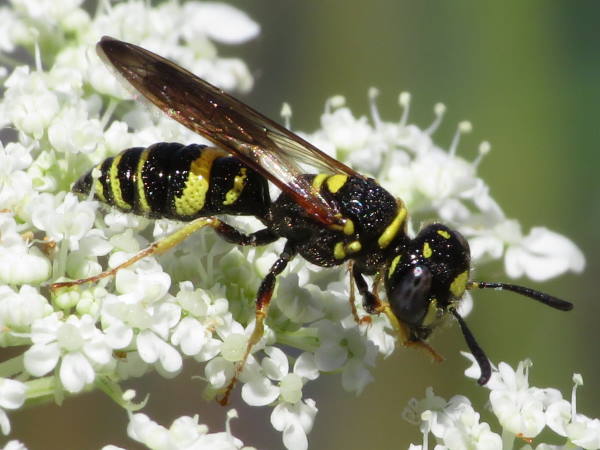
Hump-backed Beewolf
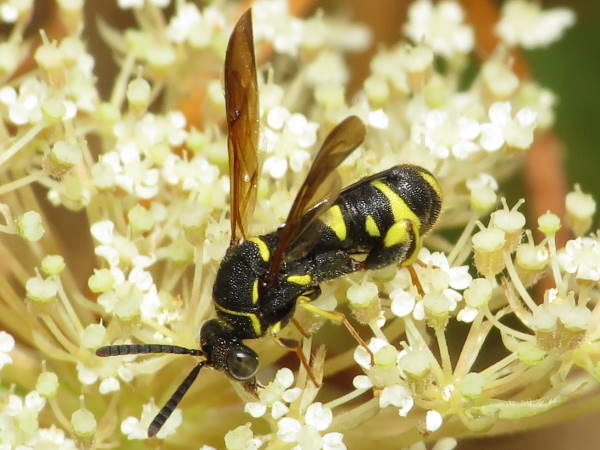
While many people rightly associate the Ichneumon wasps (long, thin wasps with ovipositors) with the parasitic wasp group, a smaller, yellow chalcid wasp, also a parasitic wasp can often be seen around the flower garden. The thicker legs and round body serve as good initial field identification clues.
Bees

North American hosts approximately one thousand different species, including its most familiar members, honey bees and bumble bees, along with less familiar names such as Cuckoo Bees, Carpenter Bees and Digger Bees.
The story of flower bees extends far beyond the basic honeybee. Approximately four thousand bees inhabit North America, and many households who practice bee friendly gardening get treated with their presence and pollination help.

California Bumblebee

California Bumble Bee (face)

Western Bumble Bee

Brown-belted Bumblebee (side)

Brown-belted Bumblebee (top)

Yellow-faced Bumble Bee (face)

Yellow-faced Bumble Bee (side)

Yellow-fronted Bumblebee (face)

Yellow-fronted Bumble Bee (side)

Yellow-fronted Bumble Bee (top)

Hairless and small in size, Cuckoo Bees family resemble wasps more than they resemble bees, making them among the least known of the family.
The common name cuckoo refers to the bee’s practice of brood parasitism, like it’s namesake in the bird world, the Cuckoo bird. Adults lay their eggs in ground nests of other bee species, and then let the young fend for themselves.

Digger Bee

Blue Orchard Bee

Leaf-cutter Bees (Megachile)

Western Longhorned Bee (face)

Western Longhorned Bee

Longhorned Bee

Oblong Woolcarder Bee

Female European Woolcarder Bee

Male European Woolcarder Bee

Stelis

Northern Rotund Resin Bee

California Digger-cuckoo Bee

Least Cellophane Cuckoo Bee

Red-footed Sharp-tailed Bee

Western Leafcutter Bee

Furrow Bee

Wide-striped Sweat Bee

Fine Lined Sweat Bee (female)

Fine Lined Sweat Bee (male)
